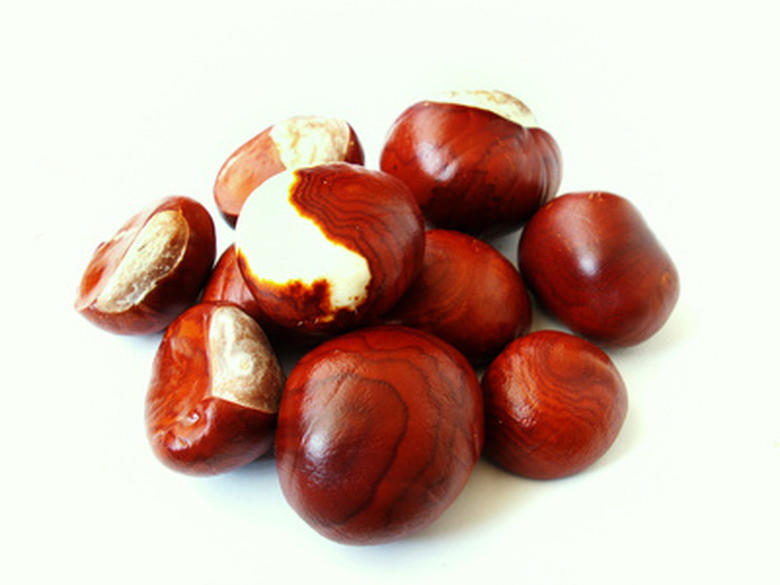Nut Trees Identification
Nut trees usually grow large, and the nuts that fall off the trees create litter, some of which will be picked up by the local wildlife population and human harvesting. Pick a tree carefully, taking into consideration its mature size. Buy a tree that is older if possible in order to get a crop sooner. Grafted trees produce crops when they are 2 to 3 years old. Trees grown from seeds take longer to produce crops, with the timing depending on the variety.
Types
Butternut (Juglans cinerea) is also known as white walnut and is a native of North America; it grows naturally in the bottom lands and lowland forests in the East and Midwest. The tree has been overharvested and is considered an endangered species. Chinese chestnut (Castanea mollissima) is native to China and Korea. The tree is resistant to, but not immune from, chestnut blight, a disease that has decimated the native American chestnut (Castanea dentata). Almond (Prunus dulcis) is a member of the rose family and native to western Asia.
- Nut trees usually grow large, and the nuts that fall off the trees create litter, some of which will be picked up by the local wildlife population and human harvesting.
Dimensions
Butternut grows to a height of 40 to 60 feet with a similar spread. Chinese chestnut grows from 40 to 60 feet tall and 40 to 60 feet wide. Almond grows from 10 to 15 feet tall with an equal spread.
Features
The yellow-green flowers of the butternut bloom in May and June. Male flowers grow in drooping clusters, while female flowers grow in spikes at the tips of the branches. The tree produces compound leaves up to 20 inches long composed of 11 to 14 lance-shaped leaflets that turn yellow in the fall. The nuts grow in clusters, encased in in hairy husks, and mature in the fall.
- Butternut grows to a height of 40 to 60 feet with a similar spread.
Chinese chestnut features dark-green, oblong or lance-shaped leaves 5 to 8 inches long that turn yellow in the fall. Fragrant yellow-white flowers bloom in late spring with the male and female flowers growing in the same clusters–male flowers at the top and female at the bottom. The chestnuts grow in spiny burs, with each bur containing two or three nuts.
Almond grows as a tree or shrub. Fragrant pink to white flowers bloom in early spring before the 5-inch-long lance- or oblong-shaped leaves. The nuts mature from 7 to 8 months after the flowers appear.
Environment
Butternut is hardy in USDA zones 3 to 7. Plant in full sun in organic, moist, well-drained soil. The tree does not do well in shade. Chinese chestnut likes full sun and a moist, well-drained loam soil. The tree is hardy in zones 4 to 8. Almond needs full sun. The tree does best in fertile, loam soil, but can take to sandy soils. Clay soils should be avoided. Nut production is best in a hot, dry climate with little humidity. Almond is hardy in zones 7 to 9.
- Chinese chestnut features dark-green, oblong or lance-shaped leaves 5 to 8 inches long that turn yellow in the fall.
- The chestnuts grow in spiny burs, with each bur containing two or three nuts.
Problems
Butternut is susceptible to butternut canker, a fatal fungal disease. The roots contain a substance that is harmful to many other plants. For this reason, it is not recommended that any other plants be placed under the trees. The butternut curculio, borers, lace bugs, caterpillars and bark beetles also damage the tree. Chinese chestnut is susceptible to leaf spot, anthracnose and twig and stem cankers. Almond is susceptible to leaf spot, die back, powdery mildew, cankers, black knot and verticillium wilt. Aphids, scale, borers, caterpillars, tent caterpillars and Japanese beetles also damage the tree.
- Butternut is susceptible to butternut canker, a fatal fungal disease.
- Chinese chestnut is susceptible to leaf spot, anthracnose and twig and stem cankers.
